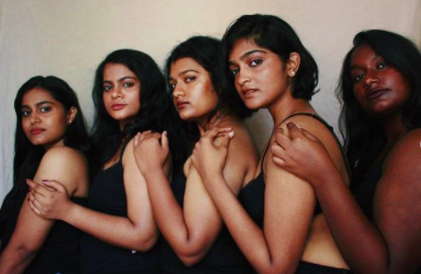Wow! I wish I had that!
…said one of my male best friends as one of my female best friend’s took off her cardigan, revealing her normally hidden arms. It was a humid mid-May afternoon, so naturally, we were all overheating. As we left the air-conditioned halls of our elementary school, I don’t quite know what struck me more intensely—the afternoon sun or my friend’s comment.
Before I continue, let me establish a few things about my male friend.
The male best friend that I am referencing is not some misogynistic, sexist, sociopath. I mean, do you really think we’d be friends if he was? To be clear, no, we wouldn’t. He is, however, a now 14-year-old, 5’9” a fairly small built and without really knowing it, kind, teenage boy. To clarify, he is not a bad person and is most definitely not someone who I’m “out to get.” Finally, for the sake of narrating this story more easily, I will refer to my male friend as Mr. D for the rest of this piece.
Continuing with my story, on that sunny afternoon due to the discomforting heat, my friend took off her cardigan, revealing her arms with hair on them. Now, this didn’t really phase me as I’m a brown teenage girl with more hair on her petite body than her mama and papa combined. Nevertheless, I wasn’t completely unphased.
However, it wasn’t her arms that struck me, it was, instead, Mr. D’s awkward comment. This comment struck me for a few different reasons which I further unpacked after the initial shock, revealing quite a few hairy truths about the role hair plays in traditional gender roles and many of our insecurities.
First off, Mr, D’s tone when he said “I wish I had that”: It was so genuine, so innocent, so pure that it hurt me, in a sense. What he was saying, he genuinely meant. He wasn’t making a snide comment. He didn’t want to hurt her, he was just saying the first thing that came to his mind.
Society has convinced young boys—that haven’t yet figured out how and when to use apostrophes and commas, and quite frankly, not even the difference between the two—that they need to have hairy arms and an overall hairy body to be considered “a man.” Secondly, his words themselves. Just as much as he could have remained silent, he could’ve made a dumb comment, called her a Wooly Mammoth or just straight up laughed at her. But, he didn’t. He looked at something she had on her body that to him appeared “masculine” and expressed that it was something he wanted or felt that he needed on his male body.
[Read Related: 11 South Asian Women Break Through the Fashion Barrier by Baring Their Insecurities on Camera]
Was the hair on her arms really that out of the ordinary? I mean, don’t get me wrong, I wax my arms and before I began waxing my arms, I did tend to cover them. Although, I have grown to accept my hair as the growth pattern and volume decreased. And yes, many girls in my school wax their arms or cover them if they aren’t waxed. And yes, the television and film industry basically never display women with hairy arms—or brown women for that matter (which is a conversation for a later date). But, still, was the hair on her arms really worth the double take?
Was there something wrong with the hair on her arms?
Was there something wrong with the hair on my arms?
No, there wasn’t. There was nothing wrong with the hair on her arms nor mine.
Even if there was something wrong with the hair on my body, there’s nothing I can do about it and nothing anyone can or should say about it. Having hairy arms and legs isn’t a choice, it’s been in my genetics for generations.
You, you’ve been here for a mere eye blink of that time so if you have something to say, you can leave my life, but this hair?—it’s been here for generations before me, and it will remain here and pass down to the generations ahead of me.
Sure I can make the decision to wax it, thread it, shave it, laser it and use an infomercial gizmo on it, which, let’s be honest, will come with its own share of judgments. But, at the end of the day, the cost of these options add up over time (even if your mom is paying for it) and don’t have permanent results.
So, the hairy truth is, patriarchy doesn’t like the hair on my arms because it’s emasculating thus leading me to believe that I don’t want hair on my arms because it makes me less feminine. Creating what would appear to be a circle—a circle of insecurity—but is really a downward spiral which we could literally get rid of if everybody just minded their business a little more and stopped paralleling one’s body hair with “masculinity” and “femininity.”
Having hair on my body isn’t a choice and the appearance of my body isn’t a subject for your voice.





